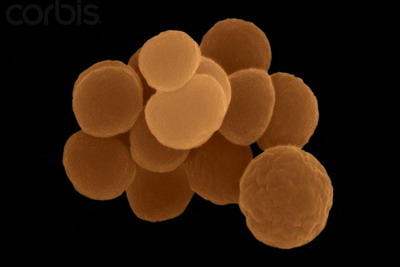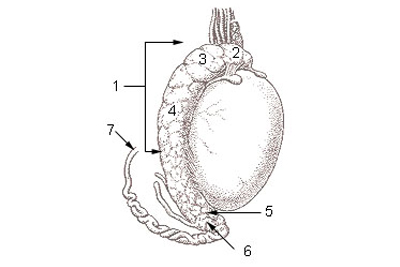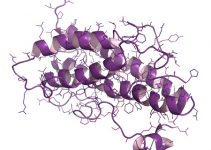Treatment of Gonorrhea
Gonorrhea is a disease that is transmitted through sexual contact from one person to another person.

The cause of the disease is by bacterium Neisseria gonorrhoeae. These bacteria can infect the genital tract, mouth, and rectum of both men and women.
This bacterium is also called by alternative name as GC. Likewise the disease is also having another name “clap”. It is the fact that if this disease is not well treated, the infection rapidly spread in to the other parts of the body causing damage to internal organs like heart valves and particularly joints. Generally it is not spread from bathrooms and toilets used by already infected one.
The disease is transmitted by sexual contacts of vaginal, anal or oral. Transmission of the disease by ‘safe sex’ is very rare.
Body fluids are the routes by which the bacterium finds its way to spread. Thus like semen and vaginal secretions are causing the infectious process from person to person. The general onset of the symptoms occurs in 4 to 6 days after infection. The incubation period varies from 2 to 30 days. Very rarely the people affected by this disease show no symptoms at all during their life time. More or less 30 to 60 % of the people affected by gonorrhea are asymptomatic or they may have sub clinical disease.

The affected men have yellow or green discharges from the penis. This symptom is common among men. There is a painful and frequent urination. Fever and pain is caused by the further spread of the disease in to prostate,epididymis and seminal vesicle.and causes inflammation of the other organs. Swelling is very common in the regions of groin and testis. Penis may also turn to red in color. Men are eventually affected by infertility if untreated. Hence, the treatment of gonorrhea is to be started at the earlier stage itself to avoid complications and permanent damage to other parts of the body. The affected women generally have vaginal discharge in yellow or green color. They also suffer from frequent and painful urination. Women have bleeding inbetween menstrual periods and they have bleeding after sexual intercourse. The normal color of the vagina changes to red by inflammation associated with burning sensation of vagina. Normally the long time infection causes pelvic inflammatory disease (PID) with abdominal discomfort and pain. Eventually, the cervix, uterus, fallopian tubes and ovaries are worst affected if this condition is not treated in advance. This causes infertility in women also. Hence, earlier diagnosis and treatment of gonorrhea is to be started at the onset of the disease.
Usually, the rectum is the common place where the infection affects badly. The infected rectum has discharge, anal itching and painful bowel movement with blood in faecal matter.
Generally, the records show that women have highest rate of infection in between the age of 15 to 19 and between 20 to 24 in men. Earlier treatment of gonorrhea is possible in this age group and the disease is fully recovered by antibiotic regimen.
Diagnosis is made by various techniques and three are most important techniques in diagnosing the disease.
- Directly staining the samples for the bacterium.
- Deducting the DNA and genes of the bacteria in urine.
- Culture test in which bacteria is grown in laboratory

Accurate diagnosis is made by doing more than one diagnostic tests. Generally staining is done from the discharge of the penis and discharge of the vagina or cervix. The taken discharge is smeared in the slide and put under the microscope for seeing the bacteria in the slide. An accurate result is obtained by this method. But however, this diagnostic method is less valuable since they may not have clear results. Detecting the genes of the bacteria is more reliable one and it is done by using urine or cervical swabs. Culture test is reliable one but the sensitivity of the test depends upon the site from which the sample is taken. In this test, the discharge collected from the infected site is placed in a culture plate and the growth of the bacteria is allowed even up to 2 days. Culture also finds about the drugs to be used as per the sensitivity of the drug to the particular bacteria. The non sensitive drugs to this particular bacteria is also revealed by this culture test.
Usually treatment is given with antibiotic and the some of the antibiotics are given herewith.
Ceftriaxone, cefixime, ofloxacin, ciprofloxacin and levofloxacin. These drugs are usually administered orally. There are some contraindications like pregnancy and lactation and under this conditions the suitable alternative antibiotics are used.
Chlamydia, is another form of STD always affect the people who have already in gonorrheal infection. In this condition, the patient is given with multi antibiotic to combat both Chlamydia and gonorrhea. Treatment of gonorrhea and treatment of Chlamydia are carried out in the same time. Usually the other sexual partner is tested for gonorrhea if one of them is infected with this disease and both of them undergo the treatment of gonorrhea if both are found positive.

Prevention is sure if when one does not have sexual activity with the one who is diagnosed positive for the disease. Using the latex condoms in vaginal and rectal sexual activity reduces the risk of having the infection.
There are more complications arise if this is not treated well even in the earlier days of the disease. The infection spreads even in to blood stream causing joint pain and heart valve problems. The ectopic pregnancy is a condition in which the pregnancy happens even in the fallopian tubes and it is caused by the affection of gonorrhea. This is a serious complication and it may result in miscarriage and death of the mother. In men, gonorrhea is causing epididymitis, a painful condition of the testicles. In both sexes, it causes infection in joints and damage to heart valves. Getting HIV infection is a possible one in the case of the individuals who already have gonorrhea infection. Hence, it is very important to take earlier treatment as soon as the symptoms arise for gonorrhea.

